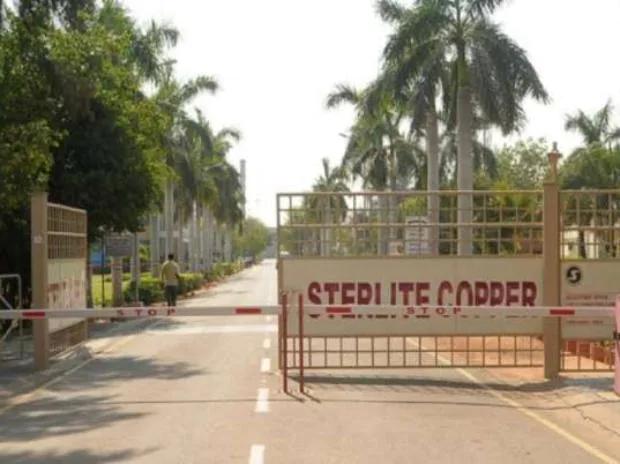Around three weeks after Sterlite Copper hinted about the hands of 'external forces' behind the Thoothukudi anti- Sterlite protests, a study on the air quality of the coastal city has indicated that there was no significant change in the air quality and sulphur dioxide (SO2) contribution to pollution in the city before and after the closure of the plant in 2018.
It was in May 2018 that 13 people were killed and around 102 left injured in a police firing at Thoothukudi. "It discovered that during the operation of the plant, the sulphur dioxide (SO2) level of the air had gone up by just 1 micron per cubic meter at various sites. The decrease in the concentration levels of SO2 by about 1 (µg m-3) after the closing of plants, is not conclusive and statistically insignificant considering the dynamic of the coastal environment and uncertainties in the monitoring and analysis methodology of SO2,” the latest study conducted by a team of experts from Asian Institute of Technology, Bangkok and National Institute of Technology in Jamshedpur.
Moreover, SO2 emissions from the operation of Sterlite Copper and its associated industries are less than 10 percent of the total SO2 emissions in Thoothukudi. “Therefore, the closure of plants may not make any change in the ambient concentration levels of SO2 in Thoothukudi. Additionally, no significant change in the concentration levels of NO2 was observed before and after the closing of plants,” the study indicated.
The study looked at the air quality and air quality index (AQI) of Thoothukudi (former Tuticorin) and compared it with three industrial clusters of Tamil Nadu -- Cuddalore, Coimbatore, and Manali-- and those of the four major metros.

For Thoothukudi, the scientists used data from three Ambient Air Quality Monitoring Stations (AAQMS), namely, AVM Jewellery, Raja Agency, and State Industries Promotion Corporation of Tamil Nadu (SIPCOT). For Cuddalore, they gleaned the data from SIPCOT and for Coimbatore, and Manali, the relevant information came from the Small Industries Development Corporations (SIDCO). AAQM data of Delhi, Mumbai, Kolkata, and Chennai were downloaded from the portal maintained by the Central Pollution Control Board.
The study (“Ambient Air Quality and Air Quality Index Trend in Thoothukudi and Comparison with Major Cities of India’’) found the concentration levels of particulate matter (PM10, PM2.5), and nitrogen dioxide (NO2) in Thoothukudi between 2015 and 2020 were not only comparable to those observed in Mumbai, Kolkata, and Chennai, which were coastal cities like Thoothukudi, but were also comparable with those at Manali, Cuddalore, and Coimbatore.
Only Delhi was an outlier with double the concentration level of pollutants, clearly proving that the local meteorology plays an important role in the ambient concentration levels of air pollutants other than emissions. Even the AQI of Thoothukudi like other metros (except Delhi) and other industrial hubs was less than 100, which is good quality air.
The allegation that air pollutants’ emission from the operationalisation of Sterlite Copper and the 160 MW thermal power plant, were significantly impacting the air quality of Thoothukudi, too was looked into. The scientists compared the level of air pollution one year before the closing of the plant (May 2017 – April 2018) and a year after its closing (May 2018 – April 2019).
Even the lesser concentration levels of PM10 after closing of plant, according to the authors could be attributed to less movement of traffic including heavy-duty trucks in and around the plants and other economic activities surrounding the plants and other economic activities surrounding the plants. “The lesser PM 10 concentration in the air quality between 2016-17 and 2020-21 could be probably because of the decrease in import and export and closing of economic activities at the V O Chidambaranar Port Trust and fewer movements of ships, cargos, heavy-duty vehicles such as trucks at the port.’’
The copper smelter, with a capacity of 400,000 metric tonnes per annum (MTPA), was contributing up to 36 per cent of the country’s demand for refined copper and included a refinery and copper rod plant, a sulphuric acid plant of more than 12,00,000 million tonne per annum (MTPA) and a phosphoric acid plant of 220,000 MTPA. It also had a 160 mega watt (MW) coal-based power plant to power the copper smelter.
The incident turned violent when protesters alleging that the pollution generated by the 25-year-old unit had contaminated the water bodies in the region, and caused severe health problems, tried to storm the factory premises and were prevented by the police. Environmental activists had expressed concern because copper smelting leads to various kinds of pollution, and hence, must be located far away from the residential areas.
R L Verma of the Asian Institute of Technology, Bangkok, Thailand, J. S. Kamyotra, freelance consultant, New Delhi and Dr. Balram Ambade, National Institute of Technology, Jamshedpur, Jharkhand were the key experts who worked on the report.









